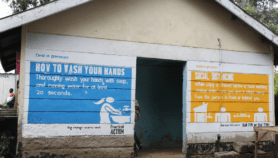By: Sophie Hebden
Send to a friend
The details you provide on this page will not be used to send unsolicited email, and will not be sold to a 3rd party. See privacy policy.
Few people were warned of the tsunami that hit the south coast of Java, Indonesia, on Monday (17 July), killing at least 550 people.
Although seismologists in Japan and the United States issued a tsunami alert, the Indonesian authorities say they were unable to warn coastal communities.
UNESCO is coordinating the Indian Ocean’s tsunami warning system, which it announced was ready for action last month (see Indian Ocean tsunami alert system up and running).
The organisation’s director-general Koïchiro Matsuura said the system functioned well. Jakarta was alerted 19 minutes after the earthquake that triggered the tsunami began, some 180 kilometres offshore.
The 2 metre high wave hit Java’s coastline 37 minutes later, but no warnings had yet reached Indonesia’s coastal areas.
Kusmayanto Kadiman, Indonesia’s minister for research and technology, said the government received an alert just seven minutes before the tsunami struck and that “there wasn’t enough time to alert all the residents in the area”, reported Xinhua news agency.
“Several hundred people still lost their lives and tens of thousands more have lost their homes and livelihoods,” said Matsuura. “The system still has big gaps, notably in getting the warnings to coastal communities in time.”
“It is important to maintain the momentum of the past 18 months and to reinforce national capacities to react effectively when such disasters strike,” Matsuura said.
The warning system was set up in response to the devastating tsunami that struck various Indian Ocean countries on 26 December 2004.
In December 2005, Sri Lankan science writer Nalaka Gunawardene pointed out that even sophisticated tsunami detection systems would be ineffective if they lacked means to disseminate their warnings (see A long ‘last mile’: the lesson of the Asian tsunami).
“With the regional warning system in place, it is now imperative that governments, civil society and mass media in the Indian Ocean countries implement practical, reliable methods to broadcast disaster warnings to communities at risk,” he told SciDev.Net today.
This week’s tsunami has left more than 50,000 people homeless. The earthquake that triggered it measured 7.7 on the Richter scale.












